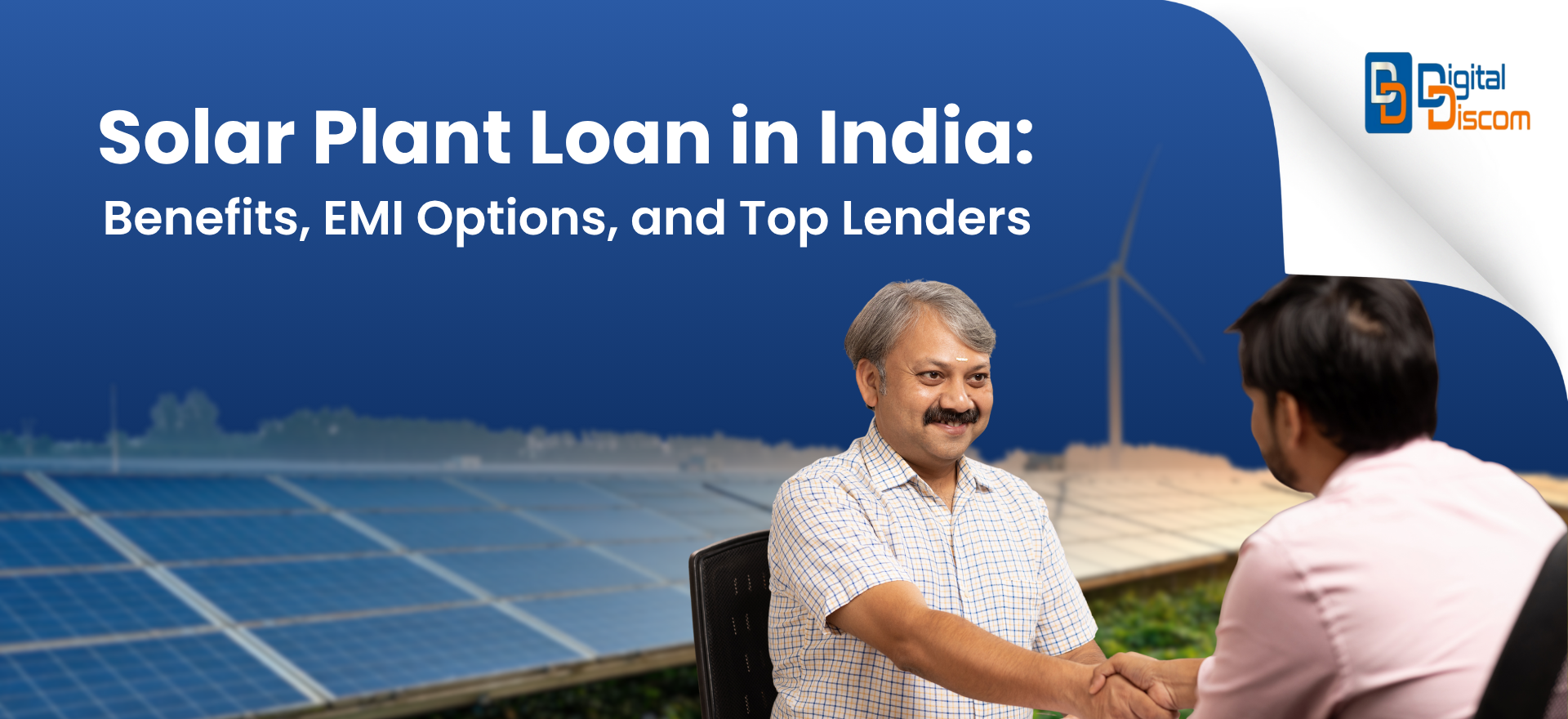India’s push for clean energy has seen massive adoption of solar power, not just by industries and commercial buildings but also by residential users. However, the upfront cost of installing a solar plant—especially for medium to large systems—can be a significant barrier. That’s where solar plant loans come in.
In this blog, we’ll explore the importance of loans for solar plants in India, the types of users they benefit, the pros and cons of financing, and a list of major financial institutions and NBFCs providing such services.
Why Loans for Solar Plants Are Important
Solar energy provides long-term savings, but initial capital investment (especially for CAPEX models) can be steep. Loans offer a structured and accessible way to fund these systems, making solar power more affordable for:
- Homeowners (3 kW–10 kW systems)
- Small businesses (10 kW–100 kW systems)
- Commercial buildings (100 kW–1 MW systems)
- Industries (1 MW and above)
Types of Solar Loans in India
- Home Solar Loans: Offered to residential users for rooftop solar plants. Often linked with home improvement loans.
- Business Solar Loans: Tailored for SMEs and commercial buildings.
- Industrial Solar Loans: For large installations by manufacturing units, warehouses, and data centers.
- Green Energy Loans/Subsidized Loans: Supported by schemes under MNRE or SIDBI for green energy initiatives.
Advantages of Taking a Solar Plant Loan
- No Upfront Burden: Enables you to install a solar plant with minimal initial capital.
- Tax Benefits: Loans may qualify for depreciation benefits under Section 32 of the Income Tax Act (for businesses).
- Faster ROI: Immediate savings on electricity bills can begin repaying the EMI.
- Flexible Tenure: Loan terms typically range from 3 to 10 years depending on the size and borrower.
- Improved Cash Flow: Useful for industries/SMEs that want to preserve working capital.
Disadvantages to Consider
- EMI Payments: While energy savings often offset EMI, during low-output months (monsoon/winter), you may feel the burden.
- Interest Rates: Ranges between 9–16%, depending on borrower profile and institution.
- Asset Security: Some lenders may require property or plant as collateral for larger loans.
Who Should Consider Solar Plant Loans?
- Homeowners with high electricity bills (>₹2,000/month) looking to invest in rooftop solar.
- Commercial Buildings like malls, hospitals, schools, and office spaces that operate heavy air conditioning and lighting.
- Industrial Units with heavy machinery and high daytime consumption.
- Cold Storage and Warehouses that operate 24×7 and need reliable daytime electricity.
- Hotels & Resorts in sunny areas where solar can offset diesel generator usage.
Sample Cost Structure and EMI (Indicative)
| System Size | Approx. Cost (₹) | Monthly EMI (5-Year Loan @ 11%) |
|---|---|---|
| 5 kW | ₹3,00,000 | ₹6,500–7,000 |
| 10 kW | ₹6,00,000 | ₹12,500–13,000 |
| 50 kW | ₹25,00,000 | ₹52,000–55,000 |
| 100 kW | ₹50,00,000 | ₹1,05,000–1,10,000 |
| 500 kW+ | Custom quote | Custom EMI |
Top Financial Institutions Providing Solar Loans in India
- SBI – Surya Shakti Scheme
- HDFC Bank – Green Energy Loan
- Axis Bank – Solar Loans for Businesses
- Tata Capital – Equipment Financing
- IndusInd Bank – Rooftop Solar Finance
- Hero FinCorp
- L&T Finance
- SIDBI – Green Energy and Energy Efficiency Loans
- Muthoot Finance – Solar Rooftop Loans
- IREDA – Indian Renewable Energy Development Agency
How UrjaOne Can Help
UrjaOne is India’s premier platform for solar and energy services, offering PAN India access to:
- Verified solar vendors who offer EMI-based installations
- Vendors who have tie-ups with NBFCs for zero-down-payment offers
- Solar finance advisory for homes, MSMEs, and industries
- A simple platform to compare different solar loan options based on interest, tenure, and partner banks
Whether you are planning a 3 kW system for your home or a 500 kW rooftop for your industry, UrjaOne can connect you with financing partners and vendors in one place.
Final Thoughts
Getting a solar loan is a strategic move—especially if you want to shift to sustainable energy without disrupting your finances. Evaluate your ROI, research your options, and choose a loan structure that aligns with your energy consumption and budget.
Let the sun pay your electricity bill—just spread the investment smartly.
Start exploring solar loans today on UrjaOne and make your clean energy switch easier and more affordable.




